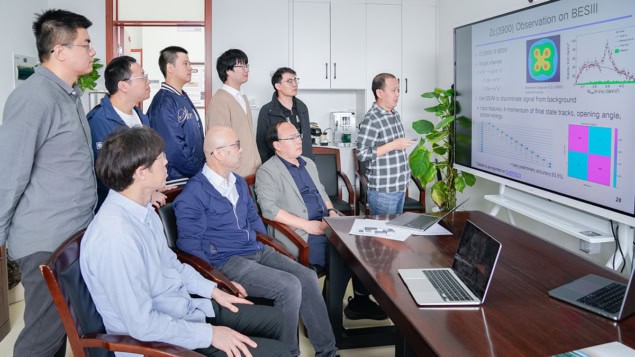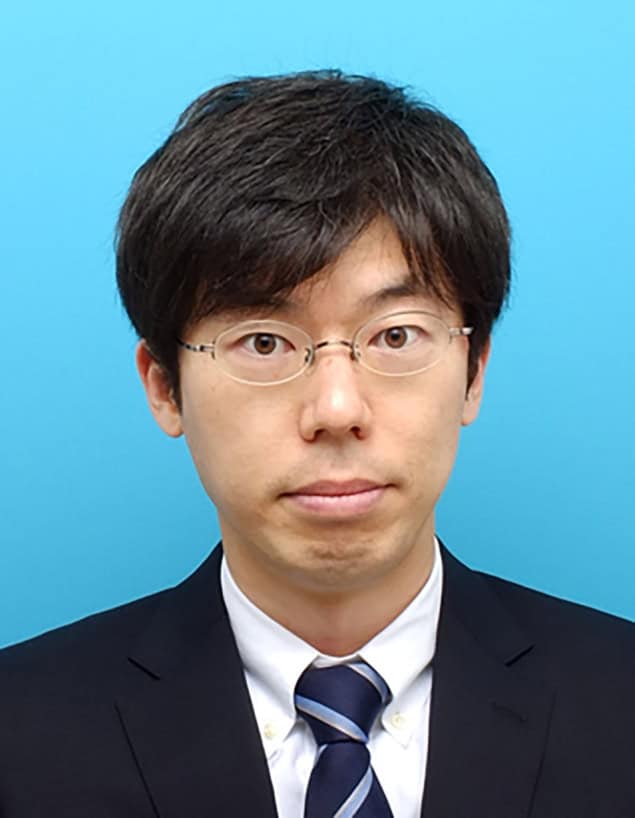A collaboration between China’s Institute of High Energy Physics and Shandong University is seeking to recruit talented international scientists to fast-track advances in quantum computing and quantum machine-learning

The particle physics community is in the vanguard of a global effort to realize the potential of quantum computing hardware and software for all manner of hitherto intractable research problems across the natural sciences. The end-game? A paradigm shift – dubbed “quantum advantage” – where calculations that are unattainable or extremely expensive on classical machines become possible, and practical, with quantum computers.
A case study in this regard is the Institute of High Energy Physics (IHEP), the largest basic science laboratory in China and part of the Chinese Academy of Sciences. Headquartered in Beijing, IHEP hosts a multidisciplinary scientific programme spanning elementary particle physics, astrophysics as well as the planning, design and construction of large-scale accelerator projects – among them the China Spallation Neutron Source, which launched in 2018, and the High Energy Photon Source, due to come online in 2025.
Quantum opportunity
Notwithstanding its ongoing investment in experimental infrastructure, IHEP is increasingly turning its attention to the application of quantum computing and quantum machine-learning technologies to accelerate research discovery. In short, exploring use-cases in theoretical and experimental particle physics where quantum approaches promise game-changing scientific breakthroughs. A core partner in this endeavour is Shandong University (SDU) Institute of Frontier and Interdisciplinary Science, home to another of China’s top-tier research programmes in high-energy physics (HEP).
With senior backing from Weidong Li and Xingtao Huang – physics professors at IHEP and SDU, respectively – the two laboratories began collaborating on the applications of quantum science and technology in summer 2022. This was followed by the establishment of a joint working group 12 months later. Operationally, the Quantum Computing for Simulation and Reconstruction (QC4SimRec) initiative comprises eight faculty members (drawn from both institutes) and is supported by a multidisciplinary team of two postdoctoral scientists and five PhD students.

“QC4SimRec is part of IHEP’s at-scale quantum computing effort, tapping into cutting-edge resource and capability from a network of academic and industry partners across China,” explains Hideki Okawa, a professor who heads up quantum applications research at IHEP (as well as co-chairing QC4SimRec alongside Teng Li, an associate professor in SDU’s Institute of Frontier and Interdisciplinary Science). “The partnership with SDU is a logical progression,” he adds, “building on a track-record of successful collaboration between the two centres in areas like high-performance computing, offline software and machine-learning applications for a variety of HEP experiments.”
Right now, Okawa, Teng Li and the QC4SimRec team are set on expanding the scope of their joint research activity. One principal line of enquiry focuses on detector simulation – i.e. simulating the particle shower development in the calorimeter, which is one of the most demanding tasks for the central processing unit (CPU) in collider experiments. Other early-stage applications include particle tracking, particle identification, and analysis of the fundamental physics of particle dynamics and collision.
“Working together in QC4SimRec,” explains Okawa, “IHEP and SDU are intent on creating a global player in the application of quantum computing and quantum machine-learning to HEP problems.”
Sustained scientific impact, of course, is contingent on recruiting the brightest and best talent in quantum hardware and software, with IHEP’s near-term focus directed towards engaging early-career scientists, whether from domestic or international institutions. “IHEP is very supportive in this regard,” adds Okawa, “and provides free Chinese language courses to fast-track the integration of international scientists. It also helps that our bi-weekly QC4SimRec working group meetings are held in English.”
A high-energy partnership
Around 700 km south-east of Beijing, the QC4SimRec research effort at SDU is overseen by Xingtao Huang, dean of the university’s Institute of Frontier and Interdisciplinary Science and an internationally recognized expert in machine-learning technologies and offline software for data processing and analysis in particle physics.
“There’s huge potential upside for quantum technologies in HEP,” he explains. In the next few years, for example, QC4SimRec will apply innovative quantum approaches to build on SDU’s pre-existing interdisciplinary collaborations with IHEP across a range of HEP initiatives – including the Beijing Spectrometer III (BESIII), the Jiangmen Underground Neutrino Observatory (JUNO) and the Circular Electron-Positron Collider (CEPC).

One early-stage QC4SimRec project evaluated quantum machine-learning techniques for the identification and discrimination of muon and pion particles within the BESIII detector. Comparison with traditional machine-learning approaches shows equivalent performance on the same datasets and, by extension, the feasibility of applying quantum machine-learning to data analysis in next-generation collider experiments.
“This is a significant result,” explains Huang, “not least because particle identification – the identification of charged-particle species in the detector – is one of the biggest challenges in HEP experiments.”

Huang is currently seeking to recruit senior-level scientists with quantum and HEP expertise from Europe and North America, building on a well-established faculty team of 48 staff members (32 of them full professors) working on HEP. “We have several open faculty positions at SDU in quantum computing and quantum machine-learning,” he notes. “We’re also interested in recruiting talented postdoctoral researchers with quantum know-how.”
As a signal of intent, and to raise awareness of SDU’s global ambitions in quantum science and technology, Huang and colleagues hosted a three-day workshop (co-chaired by IHEP) last summer to promote the applications of quantum computing and classical/quantum machine-learning in particle physics. With over 100 attendees and speakers attending the inaugural event, including several prominent international participants, a successful follow-on workshop was held in Changchun earlier this year, with planning well under way for the next instalment in 2025.
Along a related coordinate, SDU has launched a series of online tutorials to support aspiring Masters and PhD students keen to further their studies in the applications of quantum computing and quantum machine-learning within HEP.
“Quantum computing is a hot topic, but there’s still a relatively small community of scientists and engineers working on HEP applications,” concludes Huang. “Working together, IHEP and SDU are building the interdisciplinary capacity in quantum science and technology to accelerate frontier research in particle physics. Our long-term goal is to establish a joint national laboratory with dedicated quantum computing facilities across both campuses.”
One thing is clear: the QC4SimRec collaboration offers ambitious quantum scientists a unique opportunity to progress alongside China’s burgeoning quantum ecosystem – an industry, moreover, that’s being heavily backed by sustained public and private investment. “For researchers who want to be at the cutting edge in quantum science and HEP, China is as good a place as any,” Okawa concludes.
- For further information about QC4SimRec opportunities, please contact Hideki Okawa at IHEP or Xingtao Huang at SDU.
Quantum machine-learning for accelerated discovery
To understand the potential for quantum advantage in specific HEP contexts, QC4SimRec scientists are currently working on “rediscovering” the exotic particle Zc(3900) using quantum machine-learning techniques.
In terms of the back-story: Zc(3900) is an exotic subatomic particle made up of quarks (the building blocks of protons and neutrons) and believed to be the first tetraquark state observed experimentally – an observation that, in the process, deepened our understanding of quantum chromodynamics (QCD). The particle was discovered in 2013 using the BESIII detector at the Beijing Electron-Positron Collider (BEPCII), with independent observation by the Belle experiment at Japan’s KEK particle physics laboratory.
As part of their study, the IHEP- SDU team deployed the so-called Quantum Support Vector Machine algorithm (a quantum variant of a classical algorithm) for the training along with simulated signals of Zc(3900) and randomly selected events from the real BESIII data as backgrounds.
Using the quantum machine-learning approach, the performance is competitive versus classical machine-learning systems – though, crucially, with a smaller training dataset and fewer data features. Investigations are ongoing to demonstrate enhanced signal sensitivity with quantum computing – work that could ultimately point the way to the discovery of new exotic particles in future experiments.




